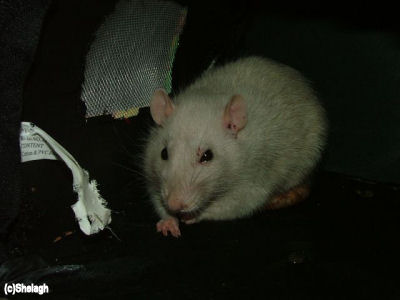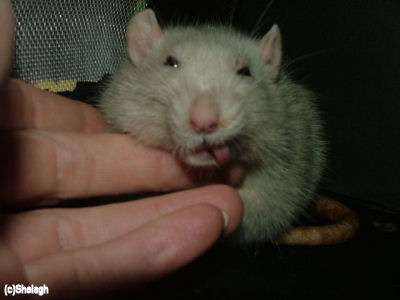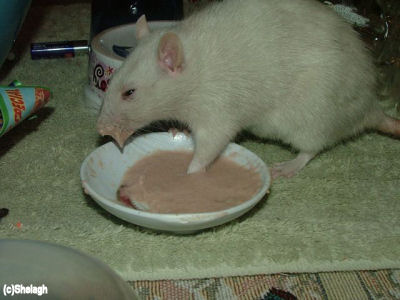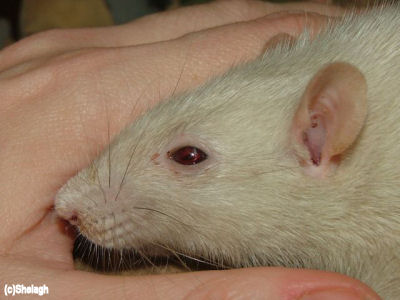Figure 1: Pituitary tumor in 16-month-old female rat (Maya).
Case history, photos, and video
History
The following is of a 16-month-old female rescue rat.
Clinical Signs
Initially rat is seen in her hammock, with her forelegs braced and awkward looking. When she was removed from the cage and put on the couch she started circling. When offered food she tries to chew the food off the finger instead of licking it off. Owner noticed her top incisors were uneven. An appointment with the vet was made for that afternoon.
Initial Treatment
Halfway to vet, blood was noticed in the ear canal. Once the vet was informed of this and more blood was found in the canal the diagnosis started leaning towards an inner ear infection. She was given a well diluted injection of Baytril and dexamethasone and was to be given 0.1 ccs oral Baytril and subcutaneous injections of .04 ccs of dexamethasone for one more day, weaning to the dexamethasone every second day after that.
After 3 days of Baytril there was a little improvement, but the rat acted very confused and was using her front limbs awkwardly. It was noticed that she had a “bad” side and had trouble with that forepaw and side of her mouth. Her mouth was crooked and she would run her tongue out that open side.
Discussed with vet and decided all these behaviors were neurological and a tumor was most likely the cause.
Diagnosis
Veterinarian diagnosed pituitary tumor based on recognized clinical signs.
(*note: necropsy not performed for verification)
Follow-up Treatment
The rat was on her first day of every 2nd day dexamethasone injections and she was acting very confused and hyper at the same time. She was having trouble figuring out where the water bottle was, and she would make a little movement to the right while drinking. She was becoming more and more unable to hold things in her forepaw and would hold food down and eat with her mouth in exaggerated movements, like ripping off bits of the food item.
She was starting to have real difficulties with eating baby cereal. She had lost a lot of motor skills and was shoveling the food with her head and mouth. She would eat and then do a lurch to the right. At one point she was obviously hungry but wasn’t able to realize there was food on the left side of the dish until her owner turned it around for her.
After the dexamethasone injection she would improve for a short time, but would regress farther and farther.
On the fifth day after initial diagnosis, she was noticed to have blood in the ear canal again, and was starting to exhibit respiratory symptoms.
On the sixth day it was back to the vet. Her Baytril got changed to .05 ccs of sub-subcutaneous injected Gentocin and the dexamethasone got changed to .05 ccs of Metacam.
That evening, her breathing had worsened, and she was distressed. After being taken out of her cage, her owner noticed her eye looked dry and put some Polysporin ointment for eyes on it. Then the owner pulled down the lower lid and realized that there was bleeding into the ocular bulb.
Owner settled into nursing her for the night. The rat had a seizure at midnight but did not succumb.
Outcome
In the morning, the rat was rushed to the vet and euthanized humanely one week after initial symptoms.
Video
Video shows Maya eating baby cereal. You can observe the frantic shoveling motion of her head and lack of dexterity.
Photos
 Photo 1: Initial symptoms observed. Maya had strange ways of lying and would cross a paw over the other one stiffly. |
 Photo 2: She also would roll her tongue out of her mouth. |
 Photo 3: Maya on the 2nd day after her injection of dexamethasone following diagnosis and starting treatment. Shows Maya losing dexterity. At times she was unable to figure out where the food was. |
 Photo 4: Bleeding into ocular bulb on the last night, you can also see the remains of the blood in her ear canal. |
Case history and photos courtesy of Shelagh Hall and “Maya”.


